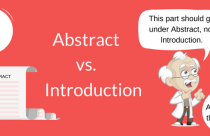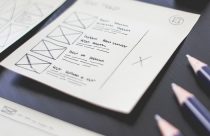Academic Writing in Science: An Overview

This article will help you develop skills to improve your writing in Engineering and Biomedicine. An important aspect of academic style includes the organizational conventions for reporting research. This involves selecting the sections (information) of the research report and choosing a structure that best suits the type of research. That is, a number of factors have to be taken into account: the content, the expected readers (your thesis supervisor, other interested researchers, or non-specialist decision-makers), and the purpose (design and testing of a system, experimental study, or the formulation of an analytical or computational model).
It is difficult to make generalizations about how academic research articles and reports should be organized. The norms vary greatly from one field to another. However, the organization is traditionally represented by the image of an hourglass. You know the shape: wide at top, narrowing towards the middle to allow only a few grains of sand to fall through at a time, and finally widening out again to hold the built up layers of sand.
Basic Structure of a Paper
The hourglass conceptualizes the traditional sections of a paper: Introduction, Methods, Results and Discussion sections, often referred to by the acronym IMRAD.
- The Introduction should convince readers of the relevance of the study. It identifies a problem in the real world and narrows down the scope of the research into a specific research question that the study attempts to answer.
- The Methods traditionally outlines how this research was conducted. With the scope of the research restricted to a manageable focus, the study can be represented by the neck of the hourglass.
- The Results describes the outcome of the research and, together with the Methods, comprises the main body of the research.
- The Discussion broadens the focus again, relates the study back to the outside world and presents the impact and wider implications of the research.
An optional component that also makes up the body of the paper is the Conclusion. However, the existence of the Conclusion is very journal-specific. Independent of the hourglass, the Abstract provides a summary of the article or report and the Title serves as the heading of the paper.
Title page
The Title page gives information about:
- The primary focus of the paper
- The authors’ names and affiliations
- The date of submission
The title of the paper should indicate exactly what the paper is about. The reader should know not only the general topic but also the aspect of the topic contained in the paper. Compare the following titles:
- General: Immune response analysis
- Specific: Analysis of a successful immune response against hepatitis C virus
Abstract
The Abstract provides a brief overview of the substance of the paper, usually no more than half a page. It is not an introduction to but a summary of the topic. The summary should outline all the key features of your paper, including the topic, what you did, how you did it and the main outcomes of your work. A busy researcher who might not have time to read the full paper should be able to get the gist of the whole paper by reading the summary.
The summary should do the following:
- State the topic of the paper
- Outline your approach to the task if applicable
- Highlight the most important findings of your research or investigation, or the key aspects of your design
- State the main outcomes or conclusions
The summary should not do the following:
- Provide general background information
- Explain why you are doing the research, investigation, or design
- Refer to later diagrams or references
Summary Structure
Topic → Key features → Conclusions
Introduction
The Introduction provides the background information needed for the rest of your paper to be understood. It is usually half to three-quarters of a page in length. The purpose of the Introduction is to set the context for your paper, provide sufficient background information for the reader to be able to follow the information presented and inform the reader about how that information will be presented.
The Introduction should include the following:
- The background to the topic of your paper to set your work in its broad context
- A clear statement of the purpose of the paper, usually to present the results of your research, investigation, or design
- A clear statement of the aims of the project
- Technical background necessary to understand the paper, e.g., theory or assumptions
- A brief outline of the structure of the paper if appropriate (this would not be necessary in a short paper)
Introduction Structure
Contextual background → Aims → Contextual background → Technical background (assumptions) → Purpose of paper
Body of the Paper (Methods, Results, & Discussion)
This is main part of the paper where you present your work. The Introduction and Conclusions act as only a frame for the body; therefore, all the details of your work must be included here in the appropriate section. You will need to put some thought into the order of the sections; the information you present should flow logically so that the reader can follow the development of your project. It is also essential that you choose concise but informative headings and subheadings so that the reader knows exactly what type of information to expect in each section.
The body of the paper should do the following:
- Present the information from your research, both real world and theoretical, or your design
- Organize information logically under appropriate headings
- Convey information in the most effective way for communication:
- uses figures and tables
- can use formatting to break up large slabs of text
Headings in the body of the paper
Provide informative headings
Section headings should tell the reader exactly what type of information is contained in the section. They should be specific and content-focused rather than just labels. Devising informative headings as opposed to label headings right from the planning stage will help you to clarify exactly what you want to achieve in each section and subsection. Compare these pairs of headings:
- Uninformative: Survey results
- Informative: Results of peak hour turning movement survey
Make all headings consistent and parallel in structure
This means that headings should follow a similar grammatical form. In the following example, each heading is structured differently:
Examples of inconsistent headings:
- Noun phrase: The Organizational Structure
- Question: Is the Communication Effective?
- Gerund Phrase: Participating in workgroups
- Instruction heading: How to Formulate Communication Channels
Usually, it is not difficult to convert such headings to a common form. In this example, all have been changed to noun phrases. This is the most commonly used format for section headings in an informational paper.
Examples of consistent headings:
- Organizational Structure
- Effective Communication
- Workgroup Participation
Formulating Effective Communication Channels
Conclusions
The Conclusion provides an effective ending to your paper. The contents should relate directly to the aims of the project as stated in the Introduction and sum up the essential features of your work.
This section should do the following:
- State whether you have achieved the aims of your investigation
- Give a brief summary of the key information in your paper
- Restate the major findings or outcomes of your investigation
The conclusions should relate to the aims of the work:
- Aim: The aim of this project is to design a mobile phone tower.
- Conclusions: In this paper, a design for a mobile phone tower has been presented. The key features of the tower are… It was found that…
Conclusion Structure
Relate to aims → Key features → Outcome
We hope this article helped you understand the important aspects of an effective academic research paper! Did you enjoy reading it? Please let us know by commenting in the section below.










I seriously needed this, I am doing science fair for the first time ever, and this article broke everything down, and helped me format my research paper. I love the extra tips and the simple steps.
Best wishes for the upcoming Science Fair. Good to know that this Enago Academy article helped you. Please feel free to share our posts with your network. Make sure you subscribe to our weekly newsletter (https://www.enago.com/academy/subscribe-now/). Have a fantastic day.